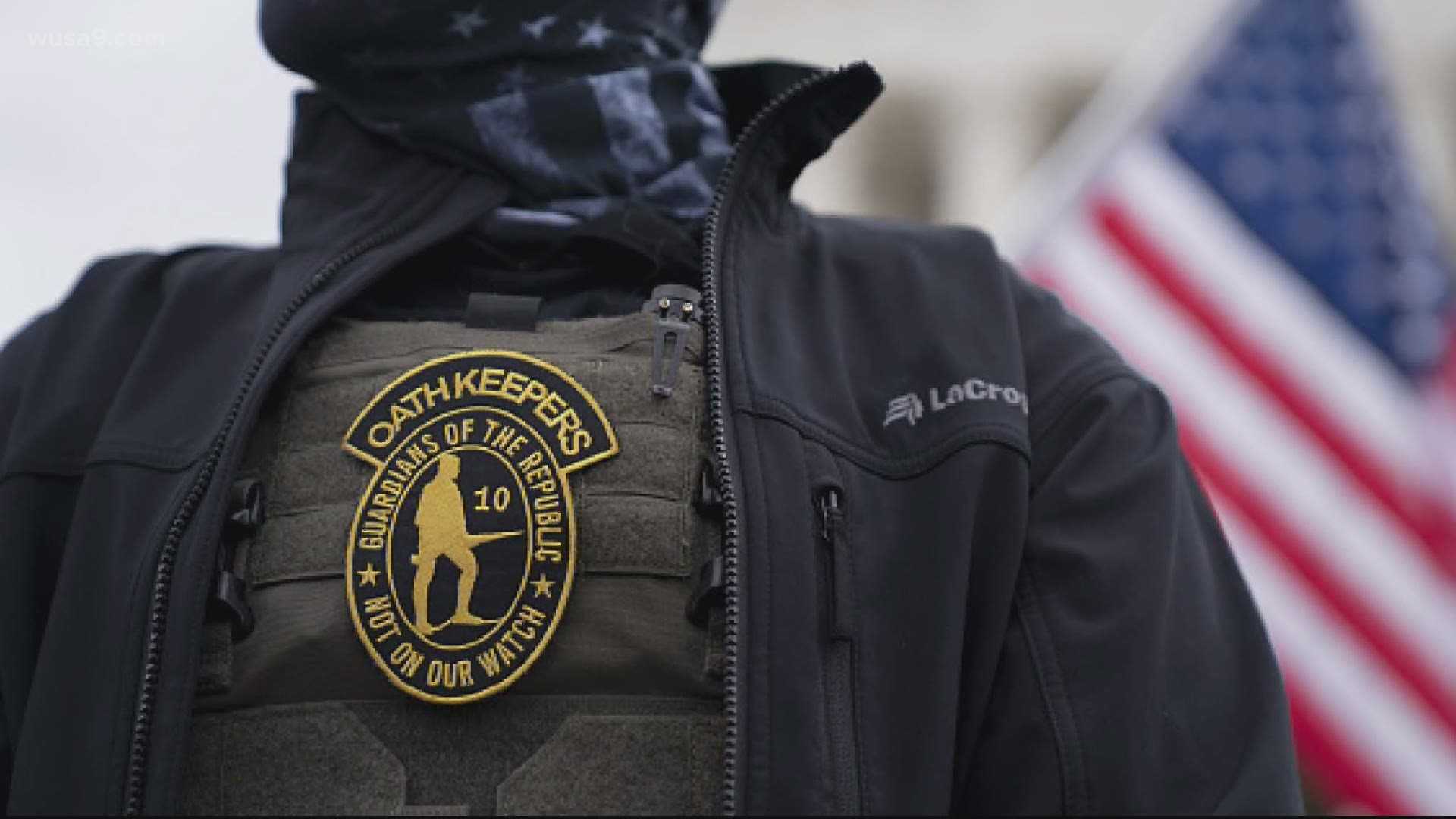WASHINGTON — More than a third of the military veterans charged so far in the Capitol riot have reported ties to domestic extremist organizations, according to a new report from extremism researchers at George Washington University and West Point.
That’s more than four times the rate of non-military arrestees so far in the case, according to a report titled “This Is War” published Monday. The report was authored by Daniel Milton and Andrew Mines, and represents a joint effort of the Program on Extremism at George Washington University and the Combating Terrorism Center at West Point.
Milton and Mines identified 43 out of 357 individuals (12%) charged in the Capitol riot as of March 31 as having military experience. They include veterans from all branches of the military except for the Coast Guard and Space Force: 22 Marines, 19 Army, three Navy, 1 Air Force and 1 unknown.
Those veterans include:
- Larry Brock, a retired lieutenant colonel who served 25 years in the U.S. Air Force and who is accused of planning to take hostages at the Capitol;
- Jeffrey McKelllop, a former U.S. Army Special Forces soldier who served 22 years and who is accused of throwing a flag pole "like a spear" and striking a police officer;
- Christopher Charles Kuehn, a 22-year Marine Corps veteran accused of being one of a number of Proud Boys to storm the Capitol;
- Dominic Pezzola, the alleged Proud Boy and Marine Corps veteran accused of smashing windows and being one of the first rioters to breach the Capitol building.
The military arrestees served an average of 9 years in the service, and the majority held leadership roles while serving – more than 25% as commissioned officers and another 55% as noncommissioned officers. With the exception of alleged Oath Keeper Jessica Watkins – and Ashli Babbitt, an Air Force veteran who was fatally shot while attempting to breach an inner door – all of the military arrestees so far have been men.
According to Milton and Mines, the numbers may be an indication of how successful extremist organizations like the Oath Keepers and the Proud Boys have been in recruiting veterans once they’ve left active duty.
“Historically, individuals with military experience are highly sought-after by various domestic violent extremist (DVE) organizations,” the authors wrote. “Some, like the Oath Keepers, prize military experience well above other qualifying characteristics. These organizations specifically target individuals with military experience for recruitment because of the significant value-add to their causes… They also offer another commodity: political legitimacy. The military is one of the most trusted institutions in the country.”
That should be concerning, the authors say, particularly the nine military arrestees with reported ties to the Proud Boys, who could serve as valuable recruiting tools.
“Our findings support previous research that highlights the disproportionate number of military veterans in DVE organizations who hold leadership roles.” Milton and Mines wrote. “It is worth restating that the figures quoted in this report may come down slightly as more individuals are arrested and charged. However, the problem remains clear: individuals with military experience not only joined DVE organizations and marched on the Capitol, but also allegedly led efforts to disrupt and deny the democratic process.”
To date, no active duty service members have been charged in the case. The authors point to a number of possible explanations for this, not the least of which was that nearly 40% of U.S. military bases were under strong travel restrictions on January 6. But, they say, it’s a compelling piece of evidence that anti-extremism efforts in the military can’t be limited to active duty soldiers.
“If anything, new resources and approaches to combat extremism in the military community should emphasize working with veterans at least as much as with non-veterans,” the authors wrote.
While 44% of military arrestees in the case had deployed at least once during their service, the authors weren’t able to draw any links between deployment and attraction to extremist ideologies. They did note, however, that deployment- and combat-related injuries, both physical and psychological, have been mentioned by defendants’ attorneys in court filings.
Milton and Mines made sure to caution that this report shouldn’t be used to draw any “sweeping conclusions,” and also that military veterans were not only on the side of the rioters. They noted that Officer Brian Sicknick, who died as a result of injuries sustained during the riot, was a veteran of the New Jersey Air National Guard. Officer Eugene Goodman, who has been honored for his heroism in drawing a mob away from members of Congress, also served in Iraq with the U.S. Army’s XVIII Airborne Corps.
The report ends with a number of recommendations for addressing extremism in the armed forces, including a new combined task force of the Department of Defense and the Department of Veterans Affairs to confront it head on.
The authors also recommend an internal documentation system to track criminal and non-criminal extremism-related incidents among active duty service members and veterans.
Finally, they say training for active duty military should better address active and passive participation in extremist networks and should focus on building “resilience” to extremism.
We're tracking all of the arrests, charges and investigations into the January 6 assault on the Capitol. Sign up for our Capitol Breach Newsletter here so that you never miss an update.

